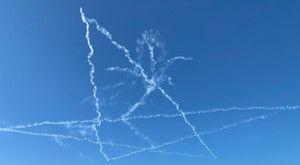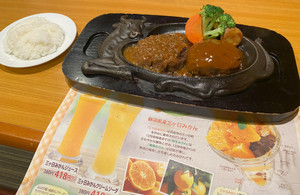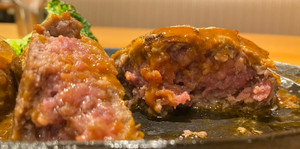I moved to Hamamatsu two and a half years ago. At that time, due to the COVID-19 pandemic, it was difficult to adapt to the new environment, and I never really got the chance to write in detail about Hamamatsu. However, today I would like to introduce the charms of Hamamatsu.
When people think of Hamamatsu, many probably think of eels from Lake Hamana. As a big eel enthusiast myself, I went to eat eel on the day I moved here. My hometown, Fukuoka, is also known for its delicious eels. In fact, about 60% of the domestically consumed eels in Japan are produced in Kagoshima and Miyazaki, but Fukuoka is also a major production area. Therefore, you can say I have a discerning taste for eels. However, it's interesting to note that Shizuoka Prefecture, where Hamamatsu is located, ranks fourth in eel production in Japan, accounting for only 9% of the market, which was unexpectedly low.
Regarding eel cooking methods, the difference between Kanto (Eastern Japan) style and Kansai (Western Japan) style often comes up in discussions. Personally, I prefer tasty food regardless of the regional cooking style. Horie Takafumi, who is also from Fukuoka, once mentioned that the best eel dishes are those from one's hometown. It seems that the taste of eel heavily depends on the cooking method, and preferences vary among individuals.
In Hamamatsu, there are eel restaurants that serve both Kanto and Kansai styles, as well as a mix of both. Generally, the Kanto style involves steaming and then grilling the eel that's cut open from the back, while the Kansai style mainly involves grilling the belly-cut eel. I have tried the Kanto-style "Unaju" (eel over rice) at a famous restaurant in Ginza, but unfortunately, it did not suit my taste. The biggest disappointment since moving to Hamamatsu has been that I haven’t yet found an Unaju that truly impresses me. Incidentally, in Shizuoka, Kanto-style natto is sold, but I find that the sauce that comes with it doesn't suit my taste. This might also influence my preference for eel sauce.
Speaking of food, a local family restaurant chain named "Sawayaka" is famous here. I had no idea about it until a friend told me. Their branch in the Gotemba Outlet Mall is particularly popular, with waiting tickets being distributed as soon as it opens. Sawayaka is exclusive to Shizuoka Prefecture, and its main store is located in Fukuroi City, about 30 minutes by car from Hamamatsu.
It is popular among teenagers and college students, especially on weekend and holiday evenings, but it is also frequented by a wide range of age groups. The specialty of the house is the hamburger steak, available in "Genco" (fist-sized) and "Onigiri" (rice ball-sized) portions, served on a hot iron plate. Some notable features include: firstly, they offer rare hamburger steaks and explain that it's safe to eat because they use 100% domestic beef without fillers. Secondly, the round hamburger steak is served on an iron plate, and they provide large paper placemats to protect from sauce splatters. If you're concerned about the doneness, they offer to change the hot plate. This was impressive to me, especially since they also replace the hot vegetable side dishes, such as carrots, potatoes, and broccoli, onto the new hot plate.
| The hamburger steak, split in half by the staff and pressed onto the hot iron plate. In front, a paper placemat to protect against the splattering sauce. | The red meat inside the hamburger steak seems almost like it's still ground meat. For those concerned, there's a system where you press it against the hot iron plate while it's still hot to cook it further. |
Lastly, I would like to mention the Blue Impulse, a symbol of Hamamatsu. They used to belong to the Japan Air Self-Defense Force Hamamatsu Base but have since moved to Matsushima Base. An air festival is held in Hamamatsu every October, and this year, after being suspended due to the pandemic, it was lively again. Fortunately, I can enjoy the Blue Impulse show from near my home, reminiscent of the air show I used to watch in Seattle while studying at the University of Washington.
 The 'Star Cross' formation created in the sky by the Blue Impulse. Visible towards the upper right of the center is the vertical ascent bloom drawn just before forming the star.
The 'Star Cross' formation created in the sky by the Blue Impulse. Visible towards the upper right of the center is the vertical ascent bloom drawn just before forming the star.

